
90
The Antlers
Burst Apart
[Frenchkiss; 2011]
While many of us were worried about how The Antlers would follow-up Hospice (our 2009 album of the year), there were few that thought the new release would even be able to hold a candle to their classic sort-of debut. And, well, most of us were wrong. See, Burst Apart is successful in that it never tries to be Hospice, but, rather, completely turns the page and starts fresh as a new project from the band. The bookends of the collection are as straightforward of songwriting as you will ever see from Peter Silberman, using his falsetto on “I Don’t Want Love” to sound like he is dueting with himself, and using extended metaphor of “Putting The Dog To Sleep” to create one of the most brutally gut-punching and emotional moments of the year. Wrapped in between is an album relying more heavily on textures and electronic layers than the crescendos and commitment to the narrative that we had previously seen with The Antlers. But, as dense as “Rolled Together” and “No Windows” can seem, Silberman’s seeming inherent gift of writing accessible melodies keeps Burst Apart from departing too far from why many of us like The Antlers in the first place. Burst Apart is the best kind of follow-up album: one that not only meets any expectations set up for the band, but also creates a whole new realm of possibilities.
– Philip Cosores
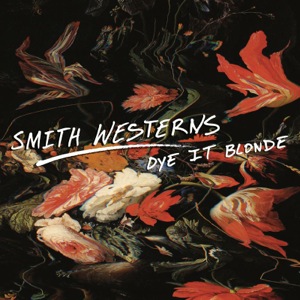
89
Smith Westerns
Dye It Blonde
[Fat Possum; 2011]
Although they already had an album out by that point, the clamoring about the Chicago garage pop band began in 2010, as the band’s first single for their sophomore album Dye It Blonde circulated the web at record speed. The new album was a dramatic and welcome leap from their debut in 2009, transforming the group from a fuzzy, home recorded buzz band into a massive sounding pop outfit that would yield endless amounts of praise since the record hit shelves. Dye It Blonde is marvelous at being adventurous while remaining accessible and lovable, and though there are plenty of examples, “End of the Night” exemplifies what makes the album so special. The Marc Bolan-esque guitar screech, the boyish vocals of lead singer Cullen Omori, the pounding of the faint piano keys during chorus. It’s a modern day rock and roll anthem, and it’s just a small sample of what this incredibly young and talented group are capable of. Dye It Blonde isn’t perfect, but it’s pure, unabashed rock revival fun.
– Erik Burg
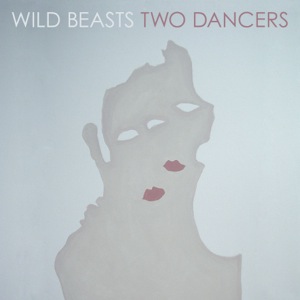
88
Wild Beasts
Two Dancers
[Domino; 2009]
From its first moments of mystery and mild menace, Two Dancers is a decisively unique – and uncompromising – record. Upon first glance it can even seem impermeable, but as the floating melodies and pitiful vocals settle in, it becomes as intimate a listen as anything released in the same period. Hayden Thorpe’s voice is nearly a weapon, in turns equally inscrutable and painfully clear. Wild Beasts may well have created themselves an unsurmountable behemoth, something they will never near again, but it matters not: it will always stand as a pattern unique.
– Chase McMullen

87
The Field
Looping State Of Mind
[Kompakt; 2011]
Axel Willner – aka The Field – knows how to make good first impressions. The opening tracks from all his releases have always been an album highlight, from the chilly sleekness of “Over The Ice” from his astounding 2007 debut From Here We Go Sublime, to the jittery and caffeinated bursts of “Morning” from his Sound of Light EP. “Is This Power,” however, really takes the biscuit, constructing the smoothest bass riff the world has seen since Nikolai Fraiture slid into the picture in the opening title track of Is This It back in 2001. From thereon in, Willner morphs a glorious world that pitches perfectly between the computer loops of his debut and the live instrumentation of the following Yesterday & Today. “Looping State of Mind” dances about a needly guitar riff, plunging into an RnB smoothness every couple of bars while “Then It’s White” has Willner creating slow, transfixing beauty out of a lumbering piano loop. Much is often said about how the music of the Field stays the same, and in a nutshell, that statement is correct, but on Looping State of Mind, he sounds his most transformed, again, channelling a groove out of a loop that sounds constantly like it’s closing in on itself (“Sweet Slow Baby”) if not just finding new surrounding for old hooks (“Arpeggiated Love”). Call it the same thing over if you want, but that’s what makes Willner’s tracks so pleasing and lasting.
– Ray Finlayson

86
Julianna Barwick
The Magic Place
[Asthmatic Kitty; 2011]
Few albums capture blissful feels perfectly, but on the shortlist for the ones that do is most definitely Julianna Barwick’s The Magic Place. On the album, Barwick captures memories in what seem like an ever-changing state, feeling as light as air one moment, and streaming like liquid the next. Her wordless reverberated chants open up huge fields that can have as much or as little specificity to them, allowing a glimpse into Barwick’s magic place, or just a soundtrack to your own. All this, and The Magic Place still manages to treat us to the sound of Barwick opening up, adding in welcome live instruments that only help evoke vivid images of sleepy sunrises over mountains, or the sight of glimmering dew drops in a field. “Prizewinning” stands out, with it’s militaristic drumming that does anything but make it stand to attention, but instead helps it sweep along with an even more powerful graceful force. Where The Magic Place takes you is up to how you settle into the album’s wonderful chasm, but it’s hard to dispute that wherever you are with it playing, it will feel like bliss.
– Ray Finlayson

85
Girls
Father, Son, Holy Ghost
[True Panther Sounds; 2011]
The collusion of genres and sounds has always been at the center of Girls’ swirling indie rock aesthetic, and nowhere is this more evident than on their sophomore album, Father, Son, Holy Ghost. Diving headfirst into the last 50 years of music, Girls frontman Christopher Owens borrows liberally from ’60s sunshine pop, ’70s melodic rock, and the blunt theatricality of ’80s music – not to mention the classic indie rock swagger of the early ’90s. And while the songs on Father, Son, Holy Ghost are inextricably linked to their musical forebears – Owens makes no effort in hiding his influences – they thrive primarily on the strength of Owens’ interpretation and not the sometimes disparate sum of his musical antecedents.
Shifting between fizzy, pop gems (“Honey Bunny”) and riff-heavy rockers (“Die”), Owens carefully threads his way through a laundry list of musical influences without the slightest trace of rhythmic fatigue. And while each song can be taken as an insular statement on a particular influence, Father, Son, Holy Ghost can also function as a comprehensive travelogue of the past five decades of music. Connecting the past to the present in ways that help to define our personal relationship with our own musical preferences, Girls has created an album of endless creativity, with a reverent acknowledgement of its own importance within the medium.
– Josh Pickard

84
Ty Segall Band
Slaughterhouse
[In The Red; 2012]
It’s all well and good being prolific, but without quality control that can become a detrimental attribute. Yeah, there’s something to be said for wading through the mire to find diamonds in the rough but wouldn’t it be swell if you had an artist who was consistently great as opposed to purely one or the oth…I think you know where I’m going with this. Here we find everything that makes the Cali loon so captivating bundled into one – the white-knuckle intensity, the demented left-turns into curdled psychedelia, the penchant for classic songwriting, the penchant for reworking actual historical examples of classic songwriting, the Elephantine riffs (that’s in both the traditional and White Stripesian sense). Really the only one of his multiple personalities not given airtime is the softer side, but when hurtling through 10 tracks in 29 minutes – plus the Muk-core drudgery of “Fuzz War” – why make concessions? Jay Reatard never did, and it worked out pretty well for him…Would He Have Laughed at that one? It’s 50:50. I digress; Slaughterhouse is the best Ty Segall record to date because it IS Ty Segall. But that’s probably changed in the time it took you to read this.
– Gabriel Szatan
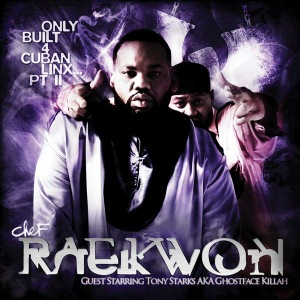
83
Raekwon
Only Built 4 Cuban Linx… Pt. II
[EMI; 2009]
In the world of hip hop, a sequel is nearly always the worst of ideas. In the ever shifting culture, recapturing a period, let alone the energy of a younger MC? Implausible, if not impossible. No one told Raekwon. After lagging for a number of years, the Chef leaped right back onto his classic “solo” (it’s nearly as much Ghostface’s work, as you should know) debut’s bandwagon, and with expectations at an insane high, delivered fully. With a handful of beats from basically, well, everyone worthwhile, from the mandatory RZA, to Pete Rock, J Dilla, Alchemist, to even a drop in from Dr. Dre (who says the Wu ain’t the definition of exclusive shit?), OB4CLII was stuffed to the brim. Arguably the album that triggered an increased fervor, for better or worse, in the (sorry) hipster world, helped reestablish the the limping Wu legacy, and – essentially – delivered what was perhaps the best, and most satisfying, pure hip hop LP of the decade. It stands tall as the greatest direct sequel in hip hop history.
– Chase McMullen
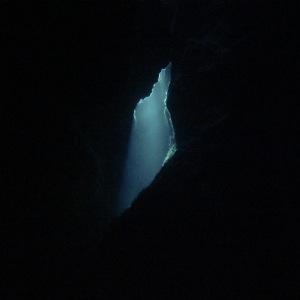
82
Balam Acab
Wander / Wonder
[Tri Angle; 2011]
Tragically often, reinvention orients an artist alarmingly far from the natural point of utterance and the product is buried in intent unachieved. Happily, this is not the case for Balam Acab’s hypnotizing debut. It is not so different from 2010’s intriguing See Birds EP, and the final moments of that release even hint toward that which Alec Koone realizes in Wander / Wonder, a spectral whisper like the unheard conversations of cave stones, rumoring of outside. And that’s just the album art. But seriously, what makes Wander / Wonder one of the most exciting debuts of the last five years is its simultaneous feeling of having come at just the right moment and being immediately timeless in its arrangement and execution of real beauty
– FM Stringer

81
Fiona Apple
The Idler Wheel
[Epic; 2012]
Even though Fiona Apple took seven years to perfect the tracks that make up her poetically titled The Idler Wheel…, she still sounds like she dealing with her anxieties and dissonance about life in real time. From the opening track, “Every Single Night,” her voice wavers, almost curdling with trepidation, just “[wanting] to feel everything” – a mantra which carries on throughout the other nine tracks. Despite sounding like she’s constantly addressing an aversion to speak out loud, connect with people, or burrow into the source of her emotions, she still manages to find a way to marry her troubled state of mind to gloriously empowering melodies, home-made percussion, and piano keys that rightly sound like they’ve been fussed over for years. All this, and then there’s her deceptive and clever wordplay that brands her feelings into the songs. Much like the album cover depicts, we see a portrait of Apple (created by herself), and it’s detailed, complex, and at points there are flashes of true colour. Dissecting it, though, is something that you’ll need time to do, but when you spin The Idler Wheel… a few times, you’ll find yourself caught up in trying to understand and relate to this complex and rare artist who proves that patience is indeed a virtue.
– Ray Finlayson
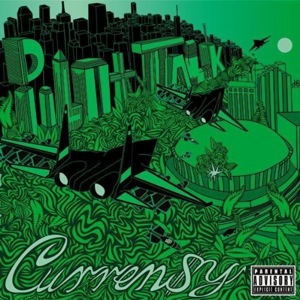
80
Curren$y
Pilot Talk
[Roc-A-Fella / Def Jam; 2010]
Curren$y may not be as prominent a hip-hop name as Kanye, Kendrick, Drake or Earl, but let it never be said that the New York-via-New Orleans rapper isn’t consistent in his output. He just doesn’t put himself out there as much as the others do. While Ye’s boasting about his Godhood, K-dot’s setting out to “murder [some] niggas,” Drizzy’s cussing out his family members, and Sweatshirt’s trying with all his might to worm his way back into obscurity, Spitta’s more interested in getting high and having a good time. Which, incidentally, is a concise description of his rap oeuvre, and nowhere is it better exemplified than on his major label debut, Pilot Talk. There’s a unique camaraderie between Curren$y, his guests, and his producers (namely, his “n*gga Ski Beatz”) that evokes the pleasure of having a great time with good friends doing something you all love, which in Spitta’s case is blazing to excess and rapping with effortlessly breezy flow.
Pilot Talk begins in triumphant, fist-bumping, bumping-and-grinding fashion with the brilliant trio of “Example” and its soaring guitars, “Audio Dope” and its strangled steel drums, and “King Kong” and its menacing synth sweeps. From there, the record settles into an easygoing weed-induced groove punctuated by jazz horns and electric pianos that invites the listener to zone out, though there’s much reward to be found in the lyrics. A few examples: “My bud covered in fuzz/ but not surrounded by the police,” “They takin’ shots at the Jets on some John Woo movie shit,” “Puzzled by my shuffle; icky wood in the Bengals.”
And that’s just Spitta; his featured performers deliver their verses with such relaxed confidence, that even Snoop Dogg’s sloppy “Seat Change” bars don’t detract from the overall quality of the track. Among the other bigger names on the guest list, Big K.R.I.T. and Devin the Dude make show-stealing appearances on “Skybourne” and “Chilled Coughee,” respectively, and Mos Def lends his services as both guest producer (“Breakfast”) and hook man (“The Day”). The good-times atmosphere Curren$y and his guests create on Pilot Talk make its 43 minutes fly by in what feels like half the time. So much so, that no matter how many times you hear the cascading electric piano riff of closer “Life Under The Scope,” you won’t be ready for the album to end.
– Harrison Suits Baer
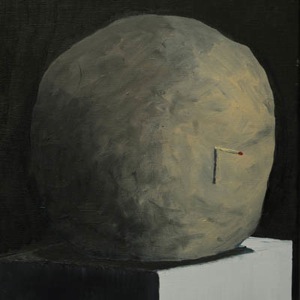
79
The Caretaker
An Empty Bliss Beyond This World
[Haft; 2011]
An Empty Bliss Beyond This World finds Leyland James Kirby moving past the Shining-inspired haunted ballrooms of his earlier work and wading deeper into the dark waters of another concept altogether. Amnesia has danced at the periphery of Kirby’s work from the beginning, but only on this album has the idea come into sharp and stunning focus. Here we still find static-wrapped swing swoons of dancehall days long gone, but also lurking are the more ambient touches of pieces like the pair titled “Mental Caverns Without Sunshine.” The work is slightly less distorted and altered than in the past, so that the subtle touches of decay speak louder than ever. Kirby’s music continues to evolve at an exponential rate, new worlds opening doors at the gentle touch of his hand, and we’re lucky to be along for his visit into the depths of such chasms.
– Zach Corsa
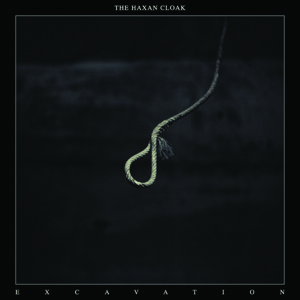
78
The Haxan Cloak
Excavation
[Tri Angle; 2013]
Bobby Krlic’s debut as The Haxan Cloak was awash with unsettling horror-film creaks and wailing strings, as evocative of the wild British countryside as a Ben Wheatley film and twice as scary. On his second collection (and first for witch-house pioneers Tri-Angle), Excavation, we find Mr. Krlic taking a hard left turn into icier digital realms, his songs now pulsing with bass-thumping menace and eerie washes of synths. Intended to soundtrack a journey into the underworld, the album’s greatest feat is its closer, “The Drop,” which moves from a surprisingly beautiful (and deceptively simple) synth melody into darker noise realms over a jaw-dropping thirteen minutes. “Excavation (Part 1)” opens with a dialogue sample of an apparent exorcist discussing the nature of demonic possession, and it’s a fitting inclusion, as Krlic summons more than enough ambience from the otherworld here to tide us over until our next descent.
– Zach Corsa
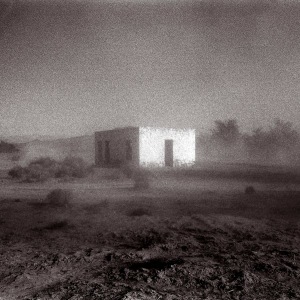
77
Godspeed You! Black Emperor
Allelujah! Don’t Bend! Ascend!
[Constellation; 2012]
The world is as fucked up and depressing as ever, if you look at it through a certain lens. Unjust wars are still raging, good people are still being exploited everywhere, and the car’s still on fire with no driver at the wheel. So what better time for a Godspeed You! Black Emperor reunion? The good news here is that the post-rock OGs kick off their new stint with fine studio versions of two past live favorites, “We Drift Like Worried Fire” and “Mladic,” and both measure out the equal parts stalking menace and stirring ethereal beauty we expect from our old friends in Montreal. The two longer drone pieces burr and churn with low-gear ferocity, as well. Here’s hoping Godspeed decide to stick around awhile, this time. The world needs them.
– Zach Corsa

76
Yeah Yeah Yeahs
It’s Blitz!
[Interscope; 2009]
Ditch the denim, get your leather on. Not just a golden reinvention, the emotional breadth of It’s Blitz! was something that Yeah Yeah Yeahs had always suggested that they were capable of, but had never really cashed in on. It isn’t all that common for a band to exhibit such cocksure swagger and still seem like they’re gasping for air. But from the rollicking thuds of “Dull Life,” to the new wave shudder of “Zero” to “Hysteric”’s twilit languishes, It’s Blitz! saw the New York trio looking farther and reaching deeper. Vocalist Karen O establishes herself as the premier frontwoman of the aughts, chewing the scenery, baring her soul and getting you to your feet in the same breath. Reminiscing about this one is enough to make you forget all about Mosquito.
– Brendan Frank
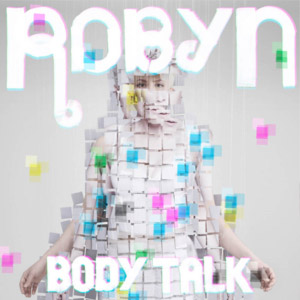
75
Robyn
Body Talk
[Konichiwa; 2010]
Robyn has knack for pouring her soul into her voice, imbuing otherwise silly lyrics like “All I want is a Delorean” with a sense of regretful desperation that makes this music great for both dancing and more focused headphones-listening. But the real gems in Body Talk, the summation of three EPs’ worth of material released in the preceding year, are the hooks. The aforementioned “Time Machine” finds Robyn asking for a Delorean, but when her voice rises up to promise that “I’ll be takin’ it back/ Takin’ it back,” pop nirvana has been approached. “Call Your Girlfriend” is brassy, dignified, and downright triumphant during the chorus. The boastful sound is entirely deserved, of course. For many pop singers, just one of the Body Talk EPs would be a career high; it’s therefore all the more impressive that Robyn released three of them. From the swagger of “Hang With Me” to the adrenaline rush of the album’s most famous single, “Dancing On My Own,” Robyn proves she can adopt many pop personas—spurned lover, home-wrecker, dancing queen—with equal aplomb. Most impressively, Robyn feels fully in command of her musical decisions here; as “Don’t Fucking Tell Me What To Do” suggests, she’s her own, fabulous woman whether she’s writing the catchiest of choruses, spitting the sickest lyrics, or simply dancing on her own.
– Josh Becker

74
Local Natives
Gorilla Manor
[Frenchkiss; 2011]
It seems hard to believe that Local Natives weren’t already picked up by a label when they recorded Gorilla Manor; the band funded the album entirely themselves, recording the album in a house that they all moved into together, and for which the album is titled. The fact that such a complete-sounding album came out of this setup is a tribute to the band, but in fact it may be because of this that it is so brilliant. The communal atmosphere is certainly audible on the final product; from the seemingly symbiotic drum rhymthms that interlock through the album, to the divine harmonies that weave between them, to the moments of bursting guitars and gang vocals that pop up naturally throughout. Gorilla Manor is equal parts the party scenes that they must have had in that household, and equal parts the late night conversations they would have stayed up for about deceased relatives and the unpredictability of life. It’s all cast in the golden California sun, characterized by resplendent guitars and the sheer joy that courses throughout the album, and can still be seen amongst the band onstage today.
– Rob Hakimian

73
Danny Brown
XXX
[Fool’s Gold; 2011]
Check! Danny Brown in the building. Not that it’s hard to miss him, what with his penchant for amusing raps, anime-inspired haircuts, skinny jeans and distinctive smile. But there was a time when Brown’s uniqueness was seen as a liability. Those jeans are the reason he reportedly didn’t get inked with then-rap royalty G Unit. It forced Brown back to Detroit, back to drug-addled streets, and forced a grown ass man going on 30 with a fledgling rap career to look in the mirror.
It was time to make moves.
Still with some buzz from the underground success of 2010’s The Hybrid, and energized by his newfound Adderall-influenced, high-pitched flow, Brown began got to work on his career-making classic. Some pieces – like an outsized personality, outstanding rap skills, and real-talk street cred – were already in place. Now more confident in his versatile abilities, Brown took a team of equally-hungry producers to another level en route to his magnum opus XXX. (Pause for a Danny Brown magnum/condom joke.)
The free download album (mentions of mere mixtape relegation have no place here) spans 19-tracks of informed drug raps, visceral vignettes, and gut-busting vulgarities. His storytelling is all energy and drug-influenced euphoria early on with the distilled “Bruiser Brigade” and the splashy “Adderall Admiral.” Eventually, the party ends with the inevitable crash (“DNA,” “Nosebleeds”) and the return home to a dilapidated Detroit (“Fields,” “Scrap or Die”).
By the time the album closes, Brown is both celebratory and reflective. “Came along way from extension cords in the window/ Borrowed neighbors power just to plug up the Nintendo,” he rhymes before “But I always tell myself that it’s gonna get better/ You know who you is, you the greatest rapper ever.” With XXX, Brown successfully sets out on a mission to prove himself right.
– Brian Hodge

72
The Horrors
Primary Colours
[XL; 2009]
The Horrors came out on their debut album Strange House as an overzealous bunch of grimey, garagey goth rockers screaming from the depths of a fairly unappealing musty basement. Fastforward two years and all of a sudden they’ve somehow apparated themselves from that moth-eaten manor to the tops of glaciers of synths and roiling, cavernous guitars. Some of the credit has to go to the album’s producer, Portishead’s Geoff Barrrow, who helped them discover these new and expansive pastures where their ideas could unfurl more artfully, but Barrow must have known the band had the potential all along, and it’s their musical prowess that comes to the fore on this stellar album. From the opening undulating synths of “Mirror’s Image” to the similarly swirling ones that close out the epic “Sea Within A Sea,” via mountainous guitars and magnificent melodrama of songs like “Do You Remember” and “New Ice Age,” this album is by turns dreamily, fist thumpingly and heart-chillingly emphatic. Primary Colours was a bolt from the black that shot The Horrors into a whole new atmosphere which they continued to explore on their third album Skying.
– Rob Hakimian

71
Bat For Lashes
Two Suns
[Parlophone; 2009]
If there was ever a way to blossom inward, then Natasha Khan may well have found a way of doing so. Her debut album, Fur & Gold, held great promise, but didn’t quite fine tune her talent enough to bowl listeners over during the album’s run. On her 2009 sophomore album, Two Suns, she channels her wide-spanning ideas into something that feels far reaching and close to home. She reaches outwards on “Siren Song” and up to the heavens with Yeasayer as a backing choir on “Peace of Mind, hmm” while “Moon and Moon” captures the sounds of something falling gracefully through the night sky. Supreme single “Daniel” has something of both sides about it, alive with a post apocalyptic hum while Khan laments on teenage escapism (all before that expertly-timed drum track comes into the picture, and from then on it’s golden). Two Suns is Khan finding a world of grand ideas to inhabit (complete with tales of metaphysical duality, haunting dream-like imagery, an alter-ego, and a sublime Scott Walker guest spot in tow), and capturing it near enough perfectly.
– Ray Finlayson

